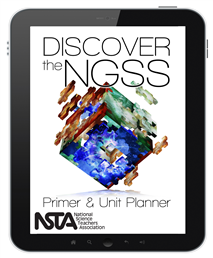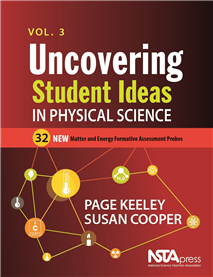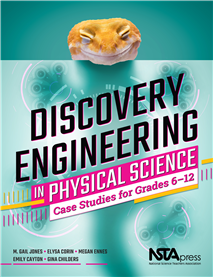Science and Humanities Classes Collaborate for Engineering Integration
By Kathy Kennedy
Posted on 2019-08-22
As my school’s new K–4 science teacher, I wanted to expand the limited time I had for dedicated science instruction by connecting science and engineering to established student activities in the homeroom classes. Successful integration depends on three features:
- Identify opportunities to collaborate with colleagues.
- Be explicit with the use of the Engineering Design Process (EDP) and Science and Engineering Practices (SEP).
- Remain flexible with timelines.
I looked at projects the homeroom teachers were already implementing and identified those in which the science and engineering were inherently present. I met with the teachers to discuss the instructional goals of their projects and share my thoughts on the potential to redesign them to include opportunities to learn science and engineering ideas. As we discussed the projects, we began to experience a shared purpose, an essential step in creating an integrated approach! I committed to dedicating science time for the homeroom project so I could ensure coherent instruction on the engineering design cycle and the science and engineering ideas and practices.
Finding the connections to these homeroom projects also made the science and engineering relevant and accessible to students and teachers. Their engagement with the science and engineering ideas carried beyond the science classroom, and students recognized the presence of science and engineering in other subject areas.
Examples of engineering design crossover into homeroom projects included these:
- Designing a Kachina doll as part of the second-grade social studies program, which examines First Nation cultures. Science connections focused on the properties of materials.
- Designing a roller coaster as part of the third-grade social studies, ELA, and STEAM program. Science connections focused on force and motion.
- Designing a piñata as part of the fourth-grade Spanish class exploring Mexican culture. Science connections focused on the properties of materials.
For the piñata project, for example, I met with the Spanish teacher to learn more about her goal to have students create a piñata as part of a unit on Mexico. Originally, students were going to follow a set procedure to create the piñata. We decided instead to present the project to students as an engineering design challenge. The SEP element Defining Problems—Define a simple design problem that can be solved through the development of an object and include several criteria for success, and the DCI element ETS1.A Defining and Delimiting Engineering Problems—The success of a designed solution is determined by considering the desired features of a solution (criteria). Different proposals for solutions can be compared on the basis of how well each one meets the specified criteria for success served as the instructional framework from which I started.
Students discovered in Spanish class what made an object a piñata. Then teams had planning discussions, partly in Spanish, and identified the criteria for designing a successful piñata. They documented these features as criteria in their planning log in science:
- A cavity in the body of the piñata
- A weak spot in the body (so an opening could be made after it dried)
- A star-shaped body with at least five points to represent cultural features
- Intentional use of color and decoration to enhance cultural significance
While discussing these criteria, students realized they needed to figure out what type of paper they could use in the paper-mache process to create the required physical features. We decided the paper needed to be absorbent. Developing and using the DCI elements PS1.A: Structure and Properties of Matter—Different properties are suited to different purposes and Matter can be described by its observable properties was one of my instructional goals. These DCI elements are identified as a second-grade science idea in the NGSS.
I purposefully chose these elements because they were most appropriate and reflected the level of student understanding within the class. We had done other investigations earlier in the year that revealed the students had not developed an understanding of the properties of the materials to the depth I had hoped. In my instructional planning, I try to ensure that I meet students at their level and help them to progress; therefore, this project contained a mix of second-grade and fourth-grade elements.
While the DCI was at a second-grade level, students engaged in elements of grades 3–5 SEPs. Student teams designed and carried out their investigations to determine which types of paper were the most absorbent, which is SEP element Planning and Carrying Out Investigations—Plan and conduct an investigation collaborative to produce data to serve as the basis for evidence, using fair tests in which variables are controlled and the number of trials considered and ETS1.B: Developing Possible Solutions—Research on a problem should be carried out before beginning to design a solution. Students evaluated wax paper, paper towels, toilet paper, and newspaper. I was surprised and excited by the novel approaches students took to determine absorbency!
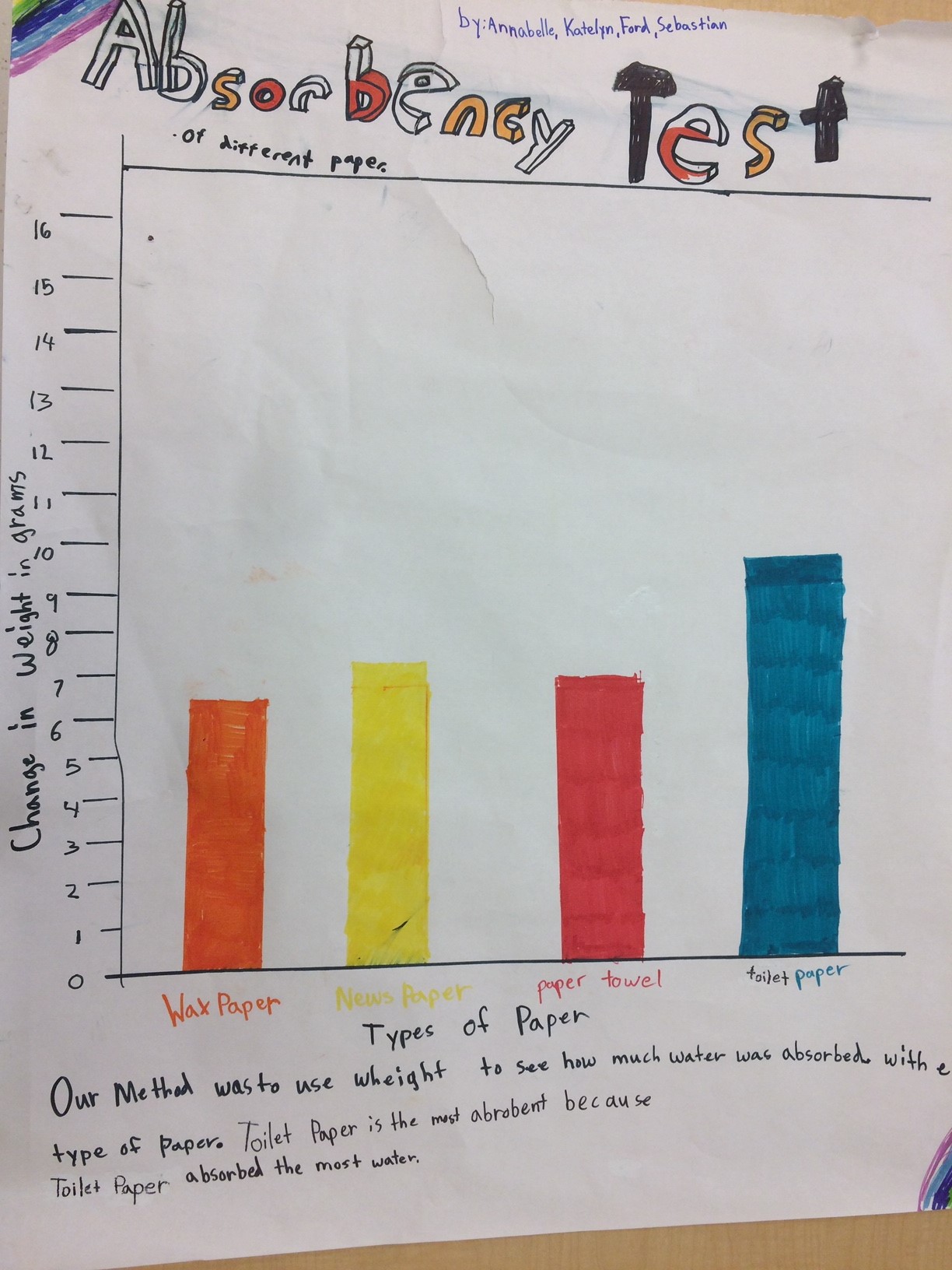
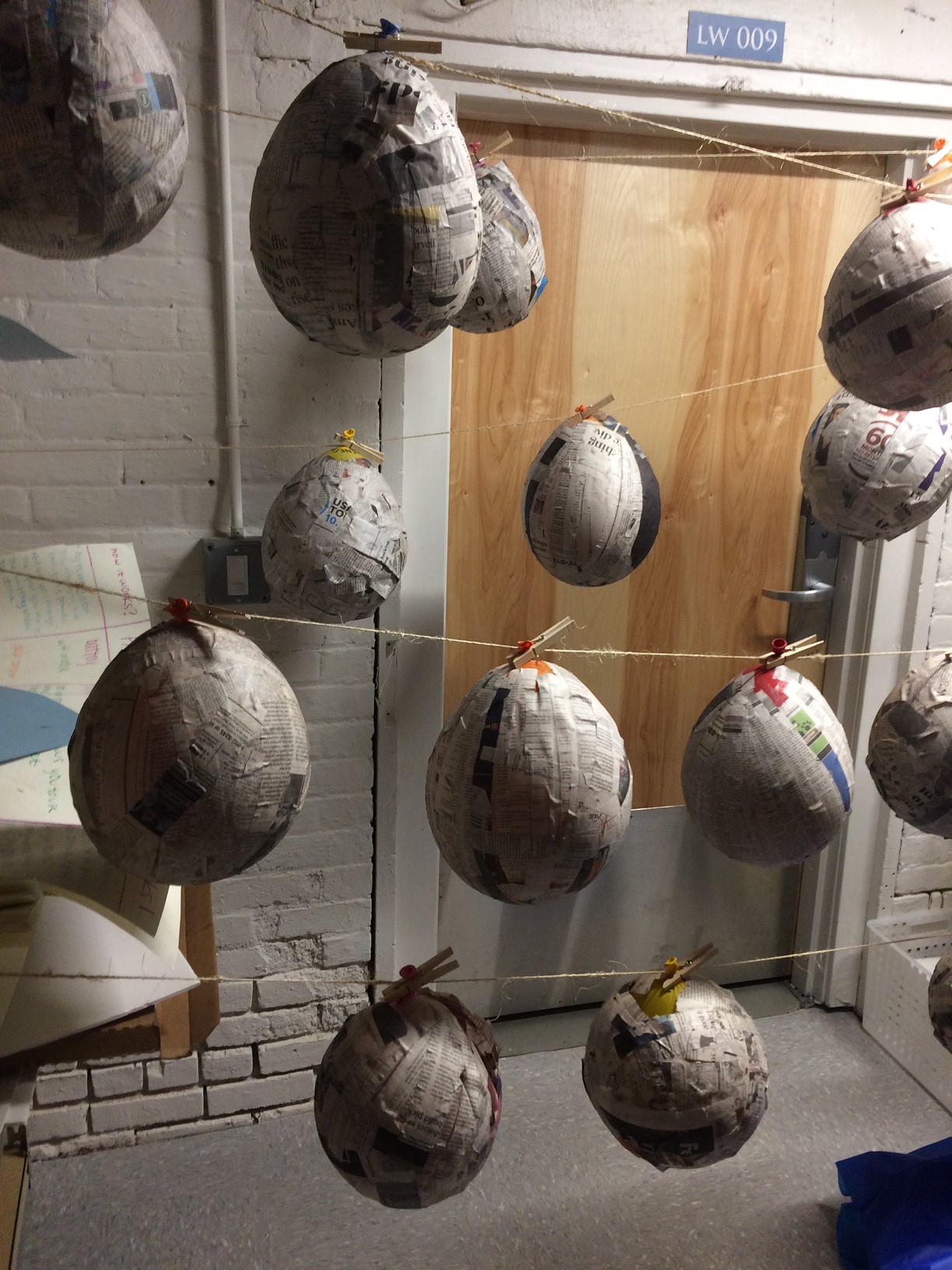
Having students determine how they would collect and analyze data did take more time than I anticipated, but remaining flexible with timelines is necessary to support student learning, as I noted earlier. Students used the data they collected to make informed design choices in constructing the piñata.
The piñata construction reflected the engineering design cycle. We used class time to document their thinking with teams filling out engineering design planning sheets. I mini-conferenced with each student group to make sure all of the criteria were accounted for in their design plans. Timelines were also adjusted to accommodate Spanish class discussion of the cultural significance of piñatas, including their color, five-point star design, and use.
A display of the finished piñatas allowed teams to recognize that while their piñatas had common elements, each team created something unique. During small-group to large-group discussion, teams justified how and why they incorporated particular features in their piñata designs. The Spanish teacher commented that the experience had moved from an arts and crafts activity to a thoughtful building process that led to deeper understanding of another country’s culture and science and engineering.
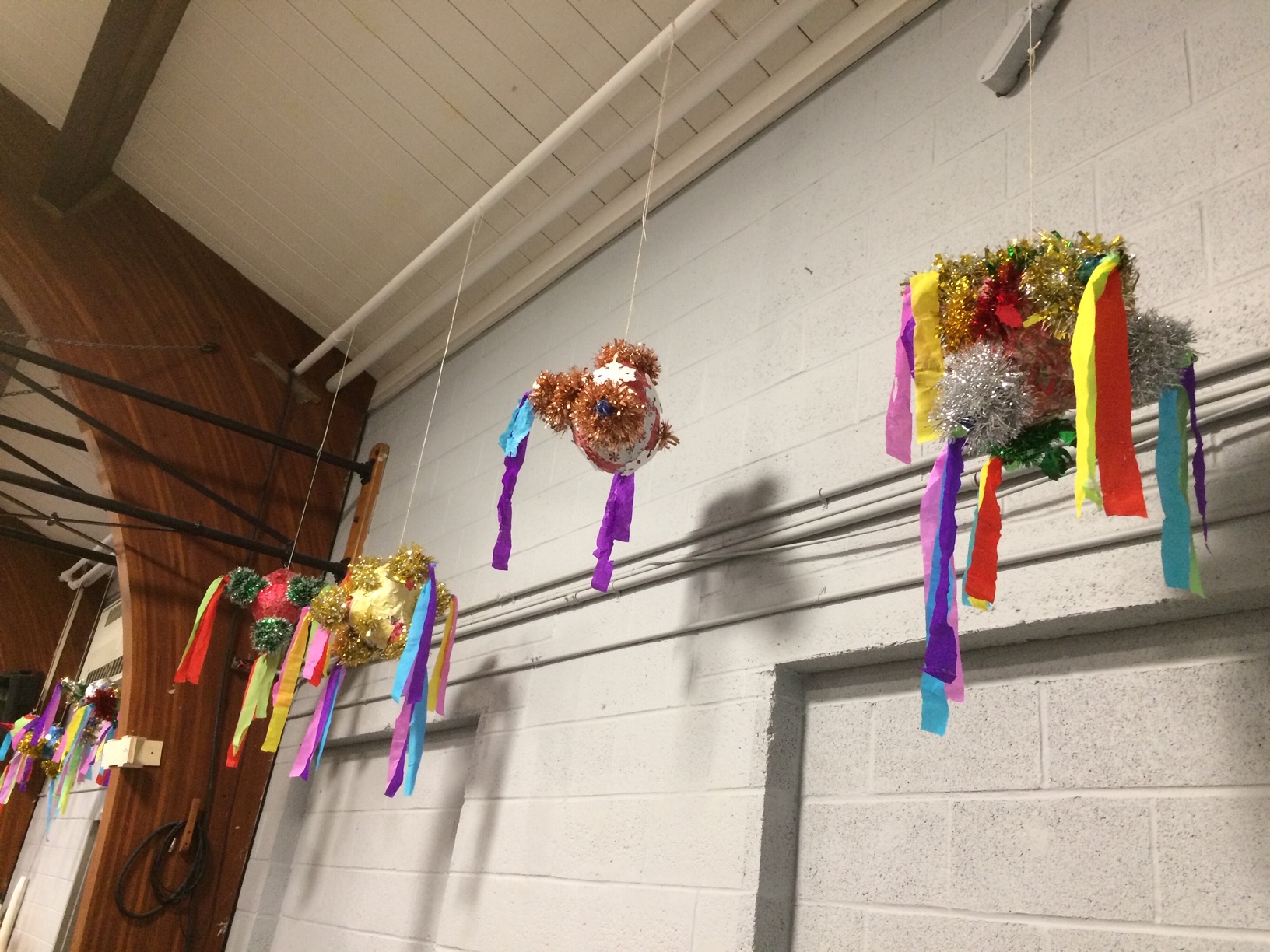
I’d love to hear about what interdisciplinary engineering projects you have developed and what were the successes and challenges with these projects. Let’s continue this conversation!
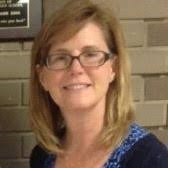 Dr. Kathy Kennedy is the K–4 science specialist at The Peck School in Morristown, New Jersey. She has previously taught at the middle, high school and college level. Kathy is a co-author of the NSTA publication Engineering in the Life Sciences, 9-12 and has published in Science and Children and in Science Scope. She holds a BS in Biology from Siena College, an MS in Biomedical Sciences from Baylor University and a Ph.D. in Education from Walden University. Follow her @kbkennedy7
Dr. Kathy Kennedy is the K–4 science specialist at The Peck School in Morristown, New Jersey. She has previously taught at the middle, high school and college level. Kathy is a co-author of the NSTA publication Engineering in the Life Sciences, 9-12 and has published in Science and Children and in Science Scope. She holds a BS in Biology from Siena College, an MS in Biomedical Sciences from Baylor University and a Ph.D. in Education from Walden University. Follow her @kbkennedy7
Note: This article is featured in the August 2019 issue of Next Gen Navigator, a monthly e-newsletter from NSTA delivering information, insights, resources, and professional learning opportunities for science educators by science educators on the Next Generation Science Standards and three-dimensional instruction. Click here to sign up to receive the Navigator every month.
The mission of NSTA is to promote excellence and innovation in science teaching and learning for all.
As my school’s new K–4 science teacher, I wanted to expand the limited time I had for dedicated science instruction by connecting science and engineering to established student activities in the homeroom classes. Successful integration depends on three features:
Next Gen Navigator
Engineering Design Projects That Support Science Learning
Posted on 2019-08-22
Join NSTA’s Book Study and Gain 40 Hours of Personalized Professional Learning
By Carole Hayward
Posted on 2019-08-21
If you’re beginning the school year feeling like you need more support with the Next Generation Science Standards (NGSS), NSTA has the answer for you! This September and October, NSTA is offering Shifting to the NGSS: Professional Book Study for Secondary Teachers, an online book study for secondary school educators (grades 6–12) that provides a comprehensive introduction to the NGSS.
The book study centers around the Enhanced E-book: Discover the NGSS: Primer and Unit Planner and takes place during four live web seminars scheduled from 7:15–8:45 pm Eastern time, September 17 and 24, and October 1 and 8. Participants can also join in on asynchronous discussions with other participants and with the web seminar presenters, Tricia Shelton and Jessica Holman.
The book study allows for six hours of live exchange with experts and other educators, in addition to time spent participating in the moderated discussion forum. And, the nice thing is you can participate from your home or office—no travel or fancy dress is required!
Kick off the school year with this online program and learn how to identify phenomena that can drive student learning and design NGSS lessons that work coherently within a storyline or unit of study. And, be engaged along the way! As one previous participant wrote, “It was flexible, relevant, interesting and engaging. It was not a dry lecture with a brilliant philosopher speaking jargon that was undecodable. I like that although the final session is over, I have enough resources to continue my personal planning.”
Two New NSTA Books Make It Fun and Easy to Engage Students in Physical Science
By Carole Hayward
Posted on 2019-08-19
Teachers: We know that your instructional hours are short but that your list of teaching priorities is long. If you are seeking convenient, time-saving, and easy-to-use formative assessment tools (for grades 3-12), then you need Page Keeley and Susan Cooper’s book, Uncovering Student Ideas in Physical Science: 32 New Matter and Energy Formative Assessment Probes.
This book, part of the bestselling Uncovering Student Ideas in Science series, offers the following:
- 32 different probes, each designed to uncover what students know (or think they know) about everything from a particle model of matter to ways to describe energy.
- Field-tested teacher materials that provide the best answers – along with distractors – which are connected to A Framework for K-12 Science Education and the NGSS.
- Clear, everyday language used to explain content, which helps improve teachers’ own understand of what they are teaching.
- English- and Spanish-language activities that are immediately ready to reproduce.
Keeley is the author of 21 bestselling and award-winning books on formative assessment, curriculum topic study, and teaching for conceptional understanding. Cooper is an assistant professor at Florida Gulf Coast University where she teaches science education. She has also worked with a faculty team for FGCU to create week-long summer STEM institute for K-12 teachers where many of the formative assessment probes developed by Keeley have been implemented. They enlisted the help of lots of teachers, science coordinators, and preservice instructors in trying out drafts of each of the probes to get their feedback, student data, and ideas, Keeley and Cooper dedicated their book to two middle school teachers, Luiza Holtzberg and Susan German, who “model what it means to uncover students’ ideas and use them as springboards for learning.”
What student doesn’t like being told by their teacher to “see what will happen”? In Discovering Engineering in Physical Science: Case Studies for Grades 6-12, teachers have 22, real-world case studies from which to choose, each blending science, engineering, and serendipity. Middle and high school students learn that innovations were sparked by accidental observations and they are encouraged to use their natural curiosity to explore ideas for new engineering applications and products.
Authors M. Gail Jones, Elysa Corin, Megan Ennes, Emily Cayton, and Gina Childers dedicate their book to “all the youth who remind us that the smallest things can be the most important.”
Their case studies start with an actual scientific discovery that students explore via historical accounts as well as primary documents. Students investigate physical materials, conduct research, examine data, create models, and design new products or problem-solving ideas.
While this book is ideal for classroom use, the content can be applied in flexible, interesting ways, making it a great resource for informal education settings too, such as STEM camps, science centers, etc.
With engaging titles such as “Corn Flakes: Waste Not, Want Not,”; “By the Teeth of Your Skin: Shark Skin and Bacteria”; and “From Ship to Staircase: The History of the Slinky,” and many more, this book helps students understand that there’s no one way to do science and many paths to innovations in engineering.
Spoiler alert: That smiling gecko on the front cover is more than just a pretty face!
NSTA Press’ Back-to-School gift to you is 20% off any of our newest 20 books if you order from August 12-31, 2019. Take advantage of this great offer and stock up on books that cover all grade ranges and span science disciplines. Until August 31, 2019, take 20% off our newest 20 titles when you use promo code 20BKS to purchase them online in the NSTA Science Store.
Order a copy of Uncovering Students Ideas in Physical Science: 32 NEW Matter and Energy Formative Assessment Probes. An e-book version is also available. Read a sample chapter here.
Order a copy of Discovering Engineering in Physical Science: Case Studies for Grades 6-12. An e-book version is also available. Read a sample chapter here.
Solid lessons, fluid performance
By Gabe Kraljevic
Posted on 2019-08-16
 What are some fun, engaging hands-on activities or demonstrations about the three states of matter for a third grade class?
What are some fun, engaging hands-on activities or demonstrations about the three states of matter for a third grade class?
—B., Tennessee
I think that the best activities with the states of matter involve the changes between states. You may want to review a recent post in which I shared several ideas for activities related to gases. (http://bit.ly/2MnnbnR)
Ideas for liquid/solid activities:
Ice cream in a zip-top bag
Ice cream is more than a sweet treat—it also can be a lesson on depressing the freezing point of water using salt. Record the temperature of the water during the activity. Always double-bag the liquids to avoid salty ice cream! Make sure to provide alternatives to accommodate any dietary restrictions.
Gelatin or chocolate molds
Candy molds take advantage of major properties of liquids and solids: Liquids flow and take on the shape of their container; solids maintain their shapes. Use a gummy formulation for the gelatin. Be careful with hot liquids.
Resin casting jewelry
Purchase two-part resin or epoxy to make jewelry in molds. (Don’t reuse the same molds for edible treats). Prepare the molds with a release agent like vegetable oil. There are resins which are free of harmful out-gassing. Make sure to practice beforehand and always use gloves.
Non-Newtonian fluids
Students will be astounded when they play with these bizarre starch solutions which behave both as solids and liquids. Easy, safe, but messy! Be sure to cover surfaces and wear smocks.
Hope this helps!
Image credit: CC BY-SA 3.0, https://commons.wikimedia.org/w/index.php?curid=48897
 What are some fun, engaging hands-on activities or demonstrations about the three states of matter for a third grade class?
What are some fun, engaging hands-on activities or demonstrations about the three states of matter for a third grade class?
—B., Tennessee
The High School Teacher’s Guide to the #NSTA19 Area Conferences on Science Education
By Carole Hayward
Posted on 2019-08-14
What does a typical high school science teacher’s week look like? If you rolled your eyes and think that’s a trick question, you’re not alone! Typical, predictable, boring… those just aren’t words that describe your job. And you’re not alone. NSTA Area Conferences on Science Education bring together educators at every level, with dozens of sessions and workshops crafted just for high school teachers. Plus, you’ll get to try all kinds of new products and pick up great freebies in the exhibit hall. There are three dates and cities:
- Salt Lake City, UT | October 24–26 | more info
- Cincinnati, OH | November 14–16 | more info
- Seattle, WA | December 12–14 | more info
Browse below for events and opportunities that high school teachers will particularly want to pay attention to during these fall conferences.
Keynote speakers kick off each conference with high energy and talks that make you proud to be a science teacher! (See pages 5, 13, and 21 in the program preview.)
- Salt Lake City, UT | Mireya Mayor, Primatologist and National Geographic Explorer
- Cincinnati, OH | National Geographic Explorer and Bashore Distinguished Professor and Chair of the Department of Environment and Sustainability, Catawba College; and Adjunct Professor of the Environment, Duke University
- Seattle, WA | Nalini M. Nadkarni, Professor, Department of Biological Sciences, The University of Utah, Salt Lake City
Meet the NSTA staff and leadership in the bookstore and at the membership area. Ask about NSTA’s awards for high school science teachers, including the Ron Mardigian Memorial Bio-Rad Explorer Award and many others. Applications are open now!
Chemistry and Engineering Days—Fridays at each conference
These content-focused days are held in addition to all the regularly scheduled presentations on all aspects of science education. If you want to take a deep dive into these areas, put these on your schedule. If not, no problem, go directly to #3, below.
(See pages 8, 16, and 23 of the program preview for more information.)
Dozens of sessions will be led by high school educators. Below is a small sampling of what you’ll find when you search each conference’s session browser for events targeted for high school science teaching. Salt Lake City Sessions | Cincinnati Sessions | Seattle Sessions
- Literacy, Content Reading, and the Promotion of Metacognitive Learning Strategies in STEM
- Using Case Studies in the High School Classroom
- NGSS@NSTA Forum Session: The NSTA Atlas of the Three Dimensions
- NSELA-Sponsored Session: Developing Science Practices with Citizen Science
Graduate-Level Credit Opportunities are available at each conference from local universities.
(See pages 10, 18, and 24 of the program preview for more information.)
Learn how to get published in The Science Teacher (NSTA’s high school level journal)
Salt Lake City, UT | October 24 | 2:00–3:00 PM | Room 260B, Salt Palace Convention Center
The Exhibit Hall—Daily
Check out the VIRTUAL EXHIBIT HALL
Preview and create your own list of exhibitors before the conferences using these links: www.nsta.org/saltlakecityexhibits
www.nsta.org/cincinnatiexhibits
www.nsta.org/seattleexhibits
The NSTA Exhibit Hall, with more than 125 of the leading science education companies and organizations in the world, has the newest products to show and share with educators. Don’t forget to leave room in your suitcase for all the swag.
(See p. 30 of the program preview for more information.)
Meet your fellow high school teachers at the First-Timers Session
Look for tables marked “High School” (among other topics you may choose from like STEM and NGSS), where you can meet other attendees with similar interests, get to know the NSTA leadership, win prizes, and have a lot of fun. It’s the best way to kick off your conference experience. (See p. 3 of the program preview for more information.) - Salt Lake City |Thursday, October 24, 8:00–9:00 AM | 155F, Salt Palace Convention Center
- Cincinnati | Thursday, November 14, 8:00–9:00 | Junior Ballroom D, Duke Energy Convention Center
- Seattle | Thursday, December 12, 8:00–9:00 AM | Ballroom 6B, Washington State Convention Center
Can’t Attend But Want the Experience?
Follow along on Twitter and Instagram using #NSTA19, like NSTA on Facebook, and check out our area conference albums. And don’t forget, NSTA members save up to $90 off the price of registration. Not a member? Join here.
- Read more about The High School Teacher’s Guide to the #NSTA19 Area Conferences on Science Education
What does a typical high school science teacher’s week look like? If you rolled your eyes and think that’s a trick question, you’re not alone! Typical, predictable, boring… those just aren’t words that describe your job. And you’re not alone. NSTA Area Conferences on Science Education bring together educators at every level, with dozens of sessions and workshops crafted just for high school teachers. Plus, you’ll get to try all kinds of new products and pick up great freebies in the exhibit hall.
NSTA’s 2019 Area Conferences: 3 Dates, 3 Cities, Endless Ideas for Elementary Teachers
By Carole Hayward
Posted on 2019-08-14
NSTA’s position statement on elementary school science recognizes that elementary science instruction often takes a back seat to math and reading and receives little time in the school day. But it’s also the time when children are easily interested in science and have extraordinary sense of wonder. Join us to learn how to make the most of the time you have for science and children’s innate sense of curiosity. NSTA Area Conferences on Science Education bring together educators at every level, with dozens of sessions and workshops crafted just for elementary school teachers. Plus, you’ll get to try all kinds of new products and pick up great freebies in the exhibit hall. There are three dates and cities:
- Salt Lake City, UT | October 24–26 | more info
- Cincinnati, OH | November 14–16 | more info
- Seattle, WA | December 12–14 | more info
Browse below for events and opportunities designed for elementary school teachers at our fall conferences.
NSTA Press sessions that will give teachers an “aha” moment! Below is a sample:
- Argument-Driven Inquiry in Grades 3–5: Three-Dimensional Investigations That Integrate Literacy and Mathematics
Salt Lake City, UT | Thursday, October 24, 2:00 PM–3:00 PM | Salt Palace Convention Center, 155B - Eureka! K–2 and Grades 3–5 Science Activities and Stories
Cincinnati, OH | Thursday, November 14, 3:30 PM–4:30 PM | Duke Energy Convention Center, Junior Ballroom A - Picture-Perfect Science Lessons, Using Children’s Books to Guide Inquiry K–5
Cincinnati, OH | Thursday, November 14, 9:30 AM–10:30 AM | Duke Energy Convention Center, Junior Ballroom A
Keynote speakers kick off each conference with high energy and talks that make you proud to be a science teacher! (See pages 5, 13, and 21 in the program preview.)
- Salt Lake City, UT | Mireya Mayor, Primatologist and National Geographic Explorer
- Cincinnati, OH | National Geographic Explorer and Bashore Distinguished Professor and Chair of the Department of Environment and Sustainability, Catawba College; and Adjunct Professor of the Environment, Duke University
- Seattle, WA | Nalini M. Nadkarni, Professor, Department of Biological Sciences, The University of Utah, Salt Lake City
Dozens of sessions designed for elementary school educators. Below is a small sampling of what you’ll find when you search each conference’s session browser for events targeted for elementary school science teaching. Salt Lake City Sessions | Cincinnati Sessions | Seattle Sessions
- Nurture Through Nature (How Four Teachers Stumbled Their Way into Building the Most Innovative School Club in the Country)
- Fairy Tale Forensics
- Full STEAM Ahead
- Inquiry in Action: Investigating Matter K–5
- ASEE Session: Literacy-Infused Engineering for Middle School and Elementary Students
- Experience Three-Dimensional Learning in the K–2 Classroom Around the Principles of Flight
- Inviting Play into the Classroom
Meet the NSTA staff and leadership in the bookstore and at the membership area. Ask about NSTA’s awards, including the Sylvia Shugrue Award for Elementary School Teachers and many others. Applications are open now!
Seattle-bound conference goers may enjoy this educational trip: Fermentation Science: A Behind-the-Scenes Look at Hale’s Brewery and Westland Distillery. In the spirit of STEM, you’ll learn firsthand from master brewers how biology, chemistry, and physics converge in the different processes of brewing beer. (See p. 26 of the program preview for more information.)
Short Courses
These half- or full-day content-focused sessions are held in addition to all the regularly scheduled presentations on all aspects of science education. These require tickets and are worth the extra planning if you want to take a deep dive into areas like three-dimensional teaching and STEM, citizen science, increasing student engagement through “aha” moments, and more. (See pages 9, 17, and 25 of the program preview for more information.)
Graduate-Level Credit Opportunities are available at each conference from local universities.
(See pages 10, 18, and 24 of the program preview for more information.)
The Exhibit Hall—Daily
Check out the VIRTUAL EXHIBIT HALL
Preview and create your own list of exhibitors before the conferences using these links: www.nsta.org/saltlakecityexhibits
www.nsta.org/cincinnatiexhibits
www.nsta.org/seattleexhibits
The NSTA Exhibit Hall, with more than 125 of the leading science education companies and organizations in the world, has the newest products to show and share with educators. Don’t forget to leave room in your suitcase for all the swag.
(See p. 30 of the program preview for more information.)
Meet your fellow elementary school teachers at the First-Timers Session
Look for tables marked “Elementary School” (among other topics you may choose from like STEM and NGSS), where you can meet other attendees with similar interests, get to know the NSTA leadership, win prizes, and have a lot of fun. It’s the best way to kick off your conference experience. (See p. 3 of the program preview for more information.)
- Salt Lake City
Thursday, October 24, 8:00–9:00 AM | 155F, Salt Palace Convention Center - Cincinnati
Thursday, November 14, 8:00–9:00 | Junior Ballroom D, Duke Energy Convention Center - Seattle
Thursday, December 12, 8:00–9:00 AM | Ballroom 6B, Washington State Convention Center
Can’t Attend But Want the Experience?
Follow along on Twitter and Instagram using #NSTA19, like NSTA on Facebook, and check out our area conference albums.
And don’t forget, NSTA members save up to $90 off the price of registration. Not a member? Join here.
NSTA’s position statement on elementary school science recognizes that elementary science instruction often takes a back seat to math and reading and receives little time in the school day. But it’s also the time when children are easily interested in science and have extraordinary sense of wonder. Join us to learn how to make the most of the time you have for science and children’s innate sense of curiosity.
Middle School Science Teachers: NSTA’s Area Conferences Are for You
By Carole Hayward
Posted on 2019-08-14
Does teaching middle school science require superhuman powers? Maybe, but no matter how you answer this question, one thing is certain—three days away from the classroom surrounded by educators who understand and can teach you tried-and-true ways to reach this unique bunch of people we call tweens may just save your sanity and will definitely make your career more rewarding. NSTA Area Conferences on Science Education bring together educators at every level, with dozens of sessions and workshops crafted just for middle school teachers. Plus, you’ll get to try all kinds of new products and pick up great freebies in the exhibit hall. There are three dates and cities:
- Salt Lake City, UT | October 24–26 | more info
- Cincinnati, OH | November 14–16 | more info
- Seattle, WA | December 12–14 | more info
Browse below for events and opportunities that middle school teachers will love at our fall conferences.
Dozens of sessions designed for middle school educators. Below is a small sampling of what you’ll find when you search each conference’s session browser for events targeted for midle school science teaching. Salt Lake City Sessions | Cincinnati Sessions | Seattle Sessions
- STEM-ify Your Middle School Science Classroom
- Making Detectives in Middle School: Using Ecology Mysteries to Explore Content and Integrate Writing Practices
- Middle School Magic: Choice, Song, and Play
- NMLSTA-Sponsored Session: Engaging Students with Authentic Data
- Food Chains: Using Field Surveys That Give Real Results
- ASEE Session: Literacy-Infused Engineering for Middle School and Elementary Students
- Makerspaces: Why, What, How
Keynote speakers: Kick off each conference with high energy and talks that make you proud to be a science teacher! (See pages 5, 13, and 21 in the program preview.)- Salt Lake City, UT | Mireya Mayor, Primatologist and National Geographic Explorer
- Cincinnati, OH | National Geographic Explorer and Bashore Distinguished Professor and Chair of the Department of Environment and Sustainability, Catawba College; and Adjunct Professor of the Environment, Duke University
- Seattle, WA | Nalini M. Nadkarni, Professor, Department of Biological Sciences, The University of Utah, Salt Lake City
Meet the NSTA staff and leadership in the bookstore and at the membership area. Ask about NSTA’s awards for middle school science teachers and students, including the Angela Award and many others. Applications are open now!
Seattle-bound conference goers may enjoy this educational trip: Fermentation Science: A Behind-the-Scenes Look at Hale’s Brewery and Westland Distillery. In the spirit of STEM, you’ll learn firsthand from master brewers how biology, chemistry, and physics converge in the different processes of brewing beer. (See p. 26 of the program preview for more information.)
Short Courses
These half- or full-day content-focused sessions are held in addition to all the regularly scheduled presentations on all aspects of science education. These require tickets and are worth the extra planning if you want to take a deep dive into areas like three-dimensional teaching and STEM, citizen science, increasing student engagement through “aha” moments, and more. (See pages 9, 17, and 25 of the program preview for more information.)
Graduate-Level Credit Opportunities are available at each conference from local universities.
(See pages 10, 18, and 24 of the program preview for more information.)
The Exhibit Hall—Daily
Check out the VIRTUAL EXHIBIT HALL
Preview and create your own list of exhibitors before the conferences using these links: www.nsta.org/saltlakecityexhibits
www.nsta.org/cincinnatiexhibits
www.nsta.org/seattleexhibits
The NSTA Exhibit Hall, with more than 125 of the leading science education companies and organizations in the world, has the newest products to show and share with educators. Don’t forget to leave room in your suitcase for all the swag.
(See p. 30 of the program preview for more information.)
Meet your fellow middle school teachers at the First-Timers Session
Look for tables marked “Middle School” (among other topics you may choose from like STEM and NGSS), where you can meet other attendees with similar interests, get to know the NSTA leadership, win prizes, and have a lot of fun. It’s the best way to kick off your conference experience. (See p. 3 of the program preview for more information.)
- Salt Lake City
Thursday, October 24, 8:00–9:00 AM | 155F, Salt Palace Convention Center - Cincinnati
Thursday, November 14, 8:00–9:00 | Junior Ballroom D, Duke Energy Convention Center - Seattle
Thursday, December 12, 8:00–9:00 AM | Ballroom 6B, Washington State Convention Center
Can’t Attend But Want the Experience?
Follow along on Twitter and Instagram using #NSTA19, like NSTA on Facebook, and check out our area conference albums. And don’t forget, NSTA members save up to $90 off the price of registration. Not a member? Join here.
Does teaching middle school science require superhuman powers? Maybe, but no matter how you answer this question, one thing is certain—three days away from the classroom surrounded by educators who understand and can teach you tried-and-true ways to reach this unique bunch of people we call tweens may just save your sanity and will definitely make your career more rewarding. NSTA Area Conferences on Science Education bring together educators at every level, with dozens of sessions and workshops crafted just for middle school te
Courage
By Korei Martin
Posted on 2019-08-12
Guest blog post by Valeria Rodriguez
Walking into the Moscone West Center in San Francisco on Wednesday afternoon, I had a few personal issues I was tackling, when I overheard a teacher saying:
“ I am almost 50 and I have had so many firsts since yesterday: I traveled to San Francisco, took an Uber, and ate at Whole Foods Market… and I still have three more days here. Friday I will present at this conference, which is another first. I know these things may seem small, but to me, they aren’t. I almost took my life a few years back, so the way I see it they are huge. It’s heartbreaking that I needed to almost die to really appreciate the gift that life brings and the new opportunities that it offers every day. I hope that you do not have to almost die before you realize it too.”
-Kim Konczyk
I apologized for eavesdropping and thanked her for sharing so openly. Those words were spoken by Kim, a pre-service teacher from Philadelphia who lives in chronic pain has had a few recent spine surgeries, and yet wore a smile ear to ear the entire conference going out of her way to inspire and make others smile while she was at it. She has 1 semester of coursework and 1 semester of student teaching left before she gets to grace a lucky classroom somewhere.
Throughout that conversation, I was reminded that teachers arriving at the STEM FORUM were full of COURAGE. Teachers were showing up despite each of their own stories and their own set of challenges they were working through. They were showing up with open hearts to learn, connect, build, re-build, explore, and grow in new ways as educators, and people, to SHOW UP in a more authentic way for their students and communities.
Throughout the conference, I saw many more examples of courage spring up.
- I saw vendors putting their ideas and products out to strangers, hoping that they would get to make an impact in classrooms.
- I saw teachers sharing hacks, lessons, and tips at the Elementary showcase. They were openly giving resources, sharing their contact information, and talking about some of the challenges that led to their breakthroughs.
- I saw presenters stand in front of other teachers and share ideas that had worked for them. I even had my own “face your fears” experience presenting. When I woke up the morning of my presentation, I could barely hear myself speak. I immediately wondered how I was going to deliver the presentation. When I walked into my presentation room with 15 minutes left, there was not a soul in the room. My heart sunk. I wondered if anyone would come. Then one teacher came in. She told me not to worry. Another followed, and then slowly my room started to populate with empathetic and caring teachers who helped me look for my voice ( to no avail). With sweaty armpits and palms, I took a deep breath in, took the microphone of room 2016, and presented on how to use the Design Thinking to Create Cross-Curricular lesson plans- by myself for the first time. It takes courage to stand in front of others…and I did it. By the end of my session, I realized that “my voice” wasn’t the only tool I had to transmit my message–and I wrote that down to make sure to remind myself of that once the school year started.
- I saw students bravely share on student panels their findings, project inspiration, and advice for teachers. One student said that being a passionate teachers sparks curiosity in students because if nothing else, they (students) will pay attention long enough to figure out why that teacher is so passionate about that subject. This left me thinking. It sounds like no big deal, but it takes courage to be that kind of teacher.
- I saw an astronaut who has accomplished extraterrestrial missions, now dedicates his career to focusing on terrestrial missions that provide STEM opportunities for all students through NMSI (National Math and Science Initiative.
- I saw NSTA leaders and organizers address questions, actively participate in sessions, embrace attendees’ concerns, and shared about their own professional journeys. Christine Anne Royce, retiring president of NSTA, Science educator, author, and world traveler took time from her crazy NSTA schedule to sit and talk with me. She shared about her amazing mentors along the way, her willingness to move to the next level (from classroom teacher to university professor), her “model-by-doing” mantra, and her stubbornness and/or perseverance to take risks and grow into roles she has held throughout her career. Every part of our conversation had courage written all over it, though she said that there was no ONE REAL big act of courage, all her small yet consistent acts reminded me to lean into my future fearlessly. Jennifer Williams tirelessly worked the conference from idea to reality– and grew the Elementary Showcase to the most successful it’s ever been. Right before the keynote, she graciously accepted a certificate of Honor from the City of San Francisco, but instead of taking all the credit, she immediately reminded everyone that it belongs to all of NSTA and thanked her amazing committee for their hard work. It’s no wonder that NSTA is in the midst of changing its logo, website platform, and just went through an official name change, as well.
“Members of the National Science Teachers Association (NSTA) have approved a new name for the organization that better reflects the numerous stakeholders in the K–16 science teaching community and the many places where science learning takes place. Effective immediately, the National Science Teachers Association will be known as the National Science Teaching Association.”
Those were just some of the many random sightings of courage I witnessed over the span of a few days. I bear witness to the courage it takes to teach EVERYDAY, too. Thousands of us get up every morning and SHOW UP for our students. It takes courage to ask for help, communicate concerns with our students’ families, and adjust our plans (whether its changing lessons, subject areas, classrooms, or schools). It takes courage to “FLIP” our classrooms, implement new models, and do experiments/lessons we haven’t done before (and don’t entirely know the outcome of). It takes courage to remind ourselves of the strengths our coworkers (when we have different approaches), walk away from gossip at the “watering hole”, and start positive talks about community members/students/colleagues in our workplaces (to model for our students).
It takes courage to believe that the work we do makes a difference. Life is chock full of lessons and we have to always remember that there is a greater purpose ahead if we just have the patience to see through the moments of discomfort that will inevitably cross our path (and the path of our students). Like Astronaut Bernard A Harris mentioned in his keynote, it takes courage to help students “Dream Beyond”, prepare them for the future, and “eradicate the STEM desserts” around our country. He ended his keynote saying, “Once we enable their dreams, there is no limit of what they can do.” I’d like to apply his quote to ourselves, as teachers. Once we enable our dreams, there is no limit to what we can do and what we can inspire students (and other teachers to do).
I’d like to give a special thanks to Kim for inspiring this post. May we all have the courage to appreciate the gifts that life brings and the new opportunities that life offers every day. Let’s have the courage to repeat this as many times as necessary to ourselves and our students:
“I am an infinite being with infinite possibilities”.
Thank
you to all the teachers, presenters, and NSTA who made this experience so
enriching and thought-provoking. May we all enter the new school year with
fresh eyes, open hearts, and a bottomless GRANDE cups of SOY CHAI COURAGE LATTES
or COURAGE MACCHIATOS in hand!

Guest blog post by Valeria Rodriguez
Walking into the Moscone West Center in San Francisco on Wednesday afternoon, I had a few personal issues I was tackling, when I overheard a teacher saying:
Partnering with Community Organizations to Support Science Learning: Research-based Tips for Forming Partnerships
By Peggy Ashbrook
Posted on 2019-08-10
Guest posters Claire Christensen, Corinne Singleton, Kea Anderson, and Danae Kamdar share their work investigating approaches to school-community organization partnering, perceived benefits to participating organizations and local children and families, and challenges they encountered along the way. Claire Christensen is an Education Researcher at SRI International who researches how young children learn from educational media. Corinne Singleton is a Senior Education Researcher at SRI International whose research focuses on education for underserved populations, innovative teaching and learning, education technology, and math education. Kea Anderson is a Senior Education Researcher at SRI International who specializes in informal STEM learning and supporting equity in STEM. Danae Kamdar is an Early STEM Education Researcher at Digital Promise, and her work aims to better understand how to promote STEM teaching and learning in public early childhood settings.
In Lafourche Parish, Louisiana, a veteran educator and coach added new hands-on ocean-science learning activities from PBS into a longstanding teacher professional development workshop. In Columbus, Ohio, elementary students learn about habitats and ocean species using materials from curriculum kits developed by staff at the local PBS station WOSU.

In these and five other communities around the country, elementary teachers partnered with local public media stations and other organizations to engage young children in ocean science and protecting local waterways through activities related to the PBS KIDS show, Splash and Bubbles. The partners collaborating in the examples above sought to create relationships, strategies, resources, and plans that would outlast the grant that supported their partnering.
In this post, we draw on findings from a recent partnerships study to offer guidance for school leaders and teachers interested in pursuing similar collaborations. As part of a study conducted for The Jim Henson Company and the Corporation for Public Broadcasting, we conducted 22 teacher surveys, 4 teacher interviews, 12 partner interviews, and 4 observations at 6 locations across the country to investigate partnering approaches, perceived benefits to participating organizations and local children and families, and challenges they encountered along the way. Here are a few key considerations based on what we learned.
Is partnership worth it? We found that teachers and their partners valued their Splash and Bubbles partnership and felt it furthered their shared goals. On teacher surveys, teachers said that the partnerships gave them new ideas, materials, and activities for teaching ocean science. They also felt partnering improved both their teaching and knowledge of ocean science. Notably, teachers said the partnership helped students have new experiences, develop stronger connections to the community, learn about local waterways, and have fun!
Considering potential partners. Partnering works best when plans are jointly developed, and the relationships and activities are mutually beneficial. For example, in a museum-school partnership, a school might benefit from new educational experiences provided by the museum, and the museum might benefit by reaching new audiences with educational content that is aligned to its mission. Here are some examples of community partners involved in this study, and how they supported ocean science education.
- Museums, science centers, zoos, and aquariums – In our study, teachers partnered with these types of organizations for both field trips and classroom visits. Field trips often included tailored tours or scavenger hunts based on Splash and Bubbles ocean science content. To prepare students for field trips, or as a standalone activity, some museums, zoos, and aquariums arranged for staff to visit classrooms with live specimens or related artifacts. One partner also provided classroom kits with reusable materials related to their zoo visit.
- Conservation organizations – Teachers partnered with local conservation organizations to host watershed clean-up days, either as a component of a field trip or as an event for families. Conservation organizations also provided tours and interpretation of local centers, parks, and preserves focused on protecting the local watershed and how to protect it.
- Local PBS stations – Local PBS stations received grant funds to connect teachers with other community organizations. They provided these partnerships with funding, lesson plans, and activities related to Splash and Bubbles. Many local PBS stations can partner with schools and community organizations to provide activities and lessons related to PBS KIDS content in science, math, and literacy.
Of course, your partnering options go beyond these examples! Get creative when identifying science education resources in your community, such as local farms, national parks, or universities.
Approaching potential partners to ensure a good fit. You probably already have relationships that can help connect you to a potential partner. Share your goals with in your school community to discover a parent or other educator who can make an introduction. Cold calls also work! If a particular organization may not be a perfect fit, a staff member there might be able to introduce you to colleagues at another relevant one.
As you explore potential partnerships from those you’ve brainstormed, consider your needs and constraints. Your partner may share your educational goals but may not be aware of your needs and constraints. Communicate any scheduling or resource constraints clearly. Here are some common needs to consider:
- What long-term benefits can the partnership provide? In what ways does an ongoing relationship benefit those involved? What can you create in the partnership that will serve as a lasting resource?
- Does the partner have experience working with this age group? A partner who understands child development may be able to play a larger role in activity planning or facilitation. Partners who have less experience with young children may need you to take the lead.
- Can planned activities take place within your scheduling constraints? You may need events to coincide with a particular unit, or to conclude before a school break begins.
- Can the partner make help science locally relevant? In our study, coastal communities focused on ocean science while inland ones took a watershed perspective. Teachers and students can have higher engagement with science concepts when they apply them authentically in their own communities. How can you highlight local assets in your partnership?
- What resources are available to support your continued collaboration? Developing a common understanding, inventorying resources and expertise each partner can contribute, and planning joint activities takes time. It is helpful to discuss funding and time constraints for this work.
Brainstorming partnership activities. Once you’ve identified potential partners, work together to brainstorm potential activities that meet your goals, such as helping your students to explore natural phenomena or building teacher capacity to support hands-on science, and your partners’ goals. To inspire your thinking, here are some additional ocean science activities we learned about in our study:
- A family science event to celebrate World Oceans Day, in which families rotated among stations with hands-on science activities
- Beach and waterway clean-up days and a recycled art project
- Webinars on implementing ocean science lessons for educators to view anytime
- Educator open houses, in which teachers were invited visit booths from local potential partners such as the library system, a local Department of Environmental Services, and a university extension office
- Classroom lessons using clips from Splash and Bubbles and/or crafts activities
- A pen pal program in which students shared information about their local watershed areas with a classroom in another part of the country
- Field trips to zoos, aquariums, and museums
Selecting or developing activities based on your educational and practical needs. As you and your partners refine your plans, consider your learning goals and logistical constraints. Here are some examples:
- Plan activities you can use repeatedly,to make the most of your joint work. In addition to the examples above, these can include add-on activities for long-standing regular events such as family nights or after school programs.
- Extend one-time experiences, such as field trips. One-time activities are most beneficial when supported by additional learning opportunities. In one partnership, zoo staff visited the school before a planned a field trip to the zoo to prepare the class and extend learning.
- Consider supplies, cost, and time. If the partner develops lessons for use in the classroom, you may need help preparing materials. One community partner pre-cut all paper materials to create “grab and go” lessons.
Local partnerships can help make science local and lively for your students. We hope these tips will inspire you to build new community connections and strengthen existing ones!
Guest posters Claire Christensen, Corinne Singleton, Kea Anderson, and Danae Kamdar share their work investigating approaches to school-community organization partnering, perceived benefits to participating organizations and local children and families, and challenges they encountered along the way. Claire Christensen is an Education Researcher at SRI International who researches how young children learn from educational media.



